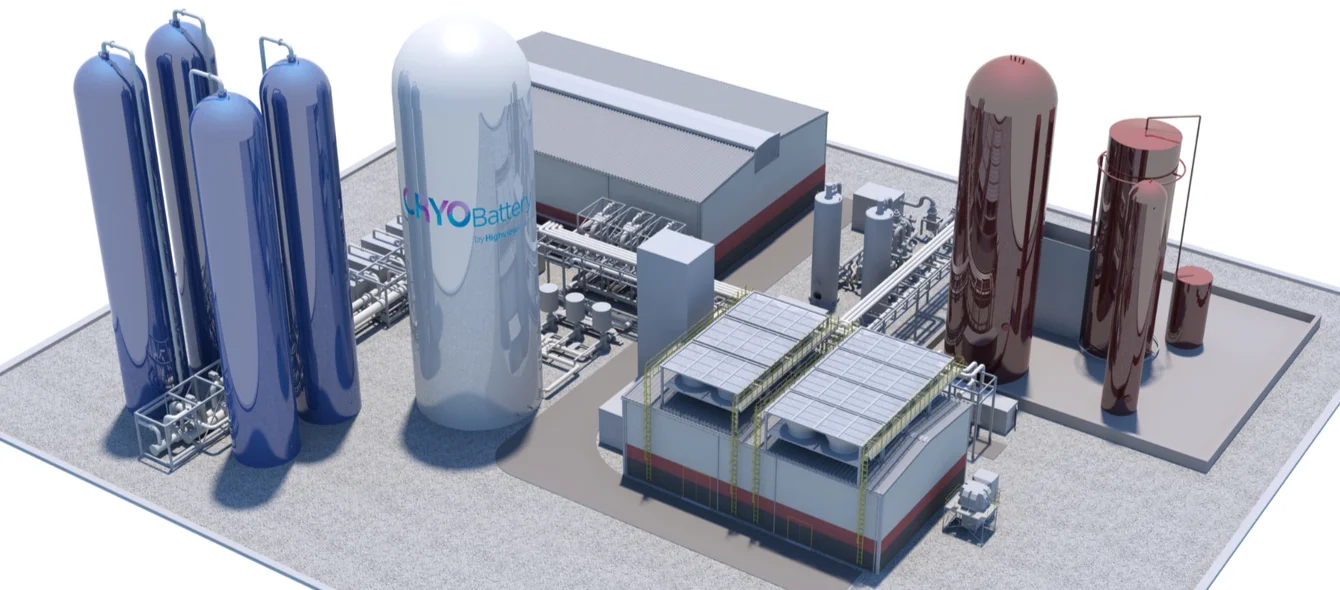It is hard to think at first glance what use liquid air might have in the energy world, but liquid air, or more specifically liquid nitrogen, the main component of air, has a remarkable property – a rapid rate of expansion when exposed to normal temperatures.
Liquid nitrogen has an expansion ratio of 1:1.694 at 20° Celsius and, if expanded in an enclosed space, exerts a huge amount of force with no energy input required.
This expansionary blast can be used to drive a piston to produce mechanical energy for locomotive force, for example in a car engine, or an electric current.
Critically, the reaction is warmth-induced expansion rather than combustion and, as a result, there are no greenhouse gas (GHG) emissions.
Can air be liquefied?
There are in fact no mysteries in liquefying either oxygen or nitrogen. Gas liquefaction is an established technology with the super-cooled gases already used mainly as coolants in a variety of industrial processes.
Air separation plants strip out the nitrogen and oxygen from normal air and the pure gases are then liquefied using compressors. The liquids are stored in cyrogenic tanks until needed.
Of course, while air is free, inert and abundant, the processes of air separation and liquefaction require energy, which can be supplied by electricity.
With electricity the energy input and also a viable output, liquid air becomes a unique form of energy storage.
Pros and cons
But why go the trouble of liquifying air when there are so many other forms of electricity storage, for example pumped hydro power stations or batteries, the cost of which is falling rapidly?
There are multiple reasons as each form of energy storage tends to have particular advantages and disadvantages, making each applicable in some situations but not others.
Pumped hydro stations can store large amounts of energy in reservoirs, but only where suitable geography exists, for example in the Alps. Some countries, such as the UK, have very limited pumped hydro capacity or potential.
Batteries can be installed almost anywhere and provide exceptional reaction times to help maintain a steady frequency on the grid. They also have excellent ‘black start’ properties in the event of an electricity outage, but their capacity and output at present are relatively small, often providing only a few hours of operation at maximum output. They are an effective form of short-duration storage.
Liquid air offers long-duration storage which, unlike pumped hydro, can be built almost anywhere. Using a liquid as the storage medium also creates a transportable fuel, the only limitations to which are the size of the storage tanks needed to keep the fuel in its liquid form. A liquid air storage facility will generate electricity for as long as it has fuel.
It also provides ‘grid-synchronous inertia’, which is a product of its moving parts, which other forms of energy storage, for example batteries, do not provide, just as wind turbines provide some inertia, while solar panels do not.
The key challenge is to harness the expansionary power of liquid air in a cost efficient way and scale up capacity to provide ever longer-duration energy storage.
From pilot to commercial plant
The use of liquid air as a form of commercial-scale energy storage is not far off. A company called Highview Power has steadily been developing the technology. It started small, building a 350kW/2.5MWh pilot at a biomass plant in Slough in the UK, which operated from 2011 until 2014.
With good results from the pilot, it moved to a 5MW/15MWh demonstration plant at the Pilsworth landfill facility in Bury, which started operating in June 2018.
Then, last October, it announced the next big step – plans to build a commercial 50 MW/250MWh plant in the north of England on the site of a decommissioned power plant. This was followed by the announcement on December 18 of plans, in conjunction with Encore Renewable Energy, to build a minimum 50MW/400MWh facility in northern Vermont in the US.
But the company’s ambitions run even higher. Last year, it unveiled a modular 200 MW/2 GWh liquid air energy system, which it estimates would have a levelized cost of energy storage of $140/MWh. At this scale, liquid air facilities could potentially compete with fossil fuel plant used to meet peak power demand, when electricity prices tend to be highest.
Efficient and sustainable
However, to do so in an environmentally sustainable way any energy storage facility is dependent on being able to access surplus or at least cheap off-peak renewable electricity, in this case to run the air separation and liquefaction processes.
This, in turn, means dependence on the continued large-scale expansion of renewable energy capacity capable of generating gigawatts of electricity, for example offshore wind.
Reaching a 100% renewable electricity system implies enough renewable energy capacity to meet peak electricity demand, but this also implies having surplus generating capacity at times of low demand. Electricity storage can smooth out the surpluses and deficits in generation.
In effect, electricity storage and renewable energy go glove-in-hand – the greater the capacity for storage, both short and long-duration, the more efficiently the peaks and troughs in variable renewable generation can be used, eventually reducing the end costs across the system for consumers and steadily improving the GHG emissions profile of electricity generation.
Photo credits: © Highview Power
